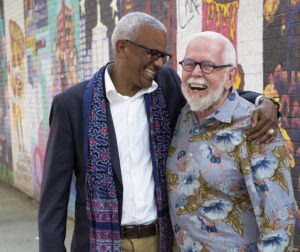What’s technology for?
Many years ago I had the pleasure of meeting a 70-something-year-old woman who lived in a long-term care setting where I provided psychological consulting services. She lived there because her progressive memory loss was too great a care challenge for her very devoted and loving family. Through it all, she maintained the ability to say things that were on her mind. One of her most frequent comments as she walked around the place and encountered an object was to ask: “What’s it for?”
When I see the wealth of technology being touted to providers of services to older adults, I ask myself the same question and wonder if the very smart people working on technologies for the aging are asking elders and their care providers if what the technology is designed for addresses a real need. My work at UMBC with mechanical engineers, IT faculty and experts in human-centered computing that began when we worked on Project 2061 for LeadingAge’s 50th annual convention in 2011, has made me aware that technology folks are great at coming up with solutions. But our aging world needs to partner with and inform the solution finders about the range of problems we think are priorities, where technology can improve the quality of life and care for elders.
Some theorists present an exciting set of futuristic solutions. Michio Kaku, in his book Physics of the Future, addresses with great imagination and promise some of the great improvements that technology can bring by applying what we know now. He presents exciting innovations in medicine, robotics, miniaturization, food production, mobility and social connectivity based on existing technology. These kinds of solutions can easily be seen as ways to enhance relationships and function as people age.
The way you frame a problem drives how you think about solutions. What worries me, however, is the tendency to make headlines about technology designed to substitute for human relationships instead of augmenting them. I would prefer we had technology that enhances function and maximizes autonomy so that elders can spend more time with each other, care staff and their families (even virtually if that’s the best that can be done) and derive the multiple bio-psycho-social benefits from those experiences. I shudder to think of a legion of robot care providers who do “body work” but have no soul—and this is not such a far-fetched scenario from what I read in the papers. But in my view it’s a short-sighted—if not destructive—answer to the labor problem in long-term care.
So, the answer to the question “what’s it for” has to be communicated clearly by us, the care providing world. If we don’t do that, tech marketers with an incomplete understanding of what our elders “need” will offer many cool gadgets that are not very useful. It’s up to us to frame the problem statement so that many more of the potentially great solutions the tech world can offer us respond to what elders and their care providers know is needed. Our opportunity lies in using our knowledge of the elders who live in our buildings and use our services to tell those who will listen—and wish to be successful—what technology should be for. Those entrepreneurs and companies that have done that are leading the way.
I Advance Senior Care is the industry-leading source for practical, in-depth, business-building, and resident care information for owners, executives, administrators, and directors of nursing at assisted living communities, skilled nursing facilities, post-acute facilities, and continuing care retirement communities. The I Advance Senior Care editorial team and industry experts provide market analysis, strategic direction, policy commentary, clinical best-practices, business management, and technology breakthroughs.
I Advance Senior Care is part of the Institute for the Advancement of Senior Care and published by Plain-English Health Care.
Related Articles
Topics: Technology & IT











